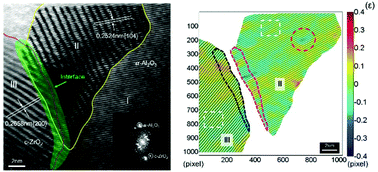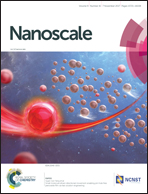TEM nano-Moiré evaluation for an invisible lattice structure near the grain interface†
Abstract
Moiré technique is a powerful, important and effective tool for scientific research, from the nano-scale to the macro-scale, which is essentially the interference between two or more periodic structures with a similar frequency. In this study, an inverse transmission electron microscopy (TEM) nano-Moiré method has been proposed, for the first time, to reconstruct an invisible lattice structure near the grain interface, where only one kind of lattice structure and Moiré fringe were visible in a high resolution TEM (HRTEM) image simultaneously. The inversion process was performed in detail. Three rules were put forward to ensure the uniqueness of the inversion result. The HRTEM image of a top-coat/thermally grown oxide interface in a thermal barrier coating (TBC) structure was observed with coexisting visible lattice and Moiré fringes. Using the inverse TEM nano-Moiré method, the invisible lower layer lattice was inversed and a 3-dimensional structure near the interface was also reconstructed to some degree. The real strain field of oriented invisible and visible lattices and the relative strain field of the Moiré fringe in the grain and near the grain boundary were obtained simultaneously through the subset geometric phase analysis method. The possible failure mechanism and position of the TBC spallation from the nano-scale to the micro-scale were discussed.



 Please wait while we load your content...
Please wait while we load your content...